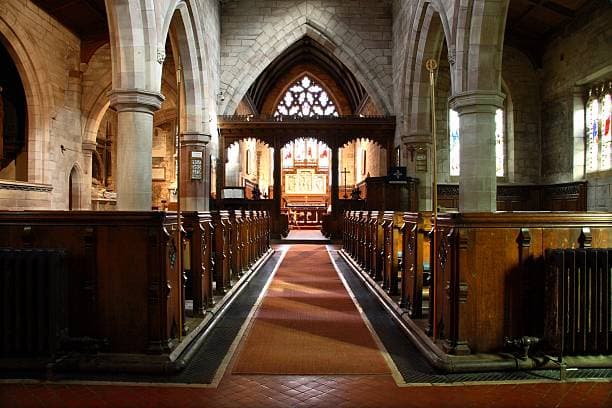The emergence of the Anglican Church is one of the key events in the history of Western Christianity. This process spans the turbulent 16th century, when religion, politics, and personal ambition became tightly intertwined. England found itself at the center of the European Reformation, but its path to breaking away from Rome was more a matter of statehood than spirituality. For Portuguese readers, this is not just a story about a religious schism, but about how a monarchy managed to create a national church and consolidate its power, shaping cultural and political identity for centuries to come.
The Break with Rome: Henry VIII’s Personal and Political Motives
The 16th century was a time of crisis for the Catholic Church. Religious debates flared across Europe, as reformers challenged the authority of Rome. However, in England the Reformation took a unique form. King Henry VIII was initially a devout Catholic and was even granted the title “Defender of the Faith” by the Pope for opposing Luther’s ideas. But everything changed due to what seemed like a personal matter — divorce.
Henry VIII wanted to annul his marriage to Catherine of Aragon, as their union had not produced a male heir. Pope Clement VII refused his request, fearing the reaction of Emperor Charles V, Catherine’s nephew. So Henry took a radical step: in 1534, he enacted the “Act of Supremacy,” declaring himself the supreme head of the Church of England. This marked a turning point — the English church became independent from Rome, and royal power acquired religious legitimacy.
Establishing a New Church: Theology and Structure
After the break with Rome, a long process of forming a new church system began. The Anglican Church retained many elements of Catholicism — rituals, the episcopate, liturgy — but rejected papal authority and adopted principles inspired by Protestant theology. An English prayer book — the Book of Common Prayer — was issued, replacing Latin with English and making worship more accessible to ordinary believers.
For many English subjects, the changes were both liberating and destabilizing. The shift in theological emphasis, the confiscation of monastic lands, and persecution of dissenters created a climate of tension that persisted even under the next monarch.
From Mary I to Elizabeth I: Stabilizing Anglicanism
The reign of Henry VIII’s daughter, Mary I, brought England back under Catholic influence. She restored ties with the Pope and began a harsh persecution of Protestants, earning the nickname “Bloody Mary.” However, her death in 1558 ushered in a new era.
With the rise of Elizabeth I, the final institutionalization of the Anglican Church began. Elizabeth re-enacted the “Act of Supremacy,” affirming her status as head of the church. The “Act of Uniformity” followed, establishing a new order of worship and reaffirming the authority of the prayer book. In this way, the church took on a stable form that combined Catholic ritual with Protestant doctrine.
The Elizabethan Compromise and Its Significance
Elizabeth’s political wisdom lay in her ability to balance between radical Protestants and moderate Catholics. This compromise became the foundation of the “broad church,” which allowed space for various interpretations of faith, so long as they did not challenge royal authority. This approach helped avoid the kind of religious wars that ravaged continental Europe and laid the groundwork for English religious pluralism.
Anglicanism and England’s Cultural Identity
The formation of the Anglican Church influenced not only religious life but also the culture, politics, and international relations of England. The church became a symbol of national sovereignty, especially in opposition to Catholic Spain. Moreover, the Anglican model was later exported to many churches in the British colonies, including today’s churches in Africa, the Caribbean, and Oceania.
Even today, Anglicanism remains a living part of history, linking medieval faith with modern global Christianity. In the Portuguese context, where Catholicism is dominant, England’s experience can serve as a compelling example of how religious reform connects with nation-building and the search for identity.
Conclusion
The history of the Anglican Church’s emergence is not only a tale of religious division but also an illustration of how political will can transform the spiritual life of a nation. From Henry VIII’s dramatic decision to Elizabeth I’s calculated compromise — each step on this path was part of a complex dialogue between power, faith, and society. This history helps explain why the Anglican Church became not just a religious institution, but a vital element of British culture and heritage.
